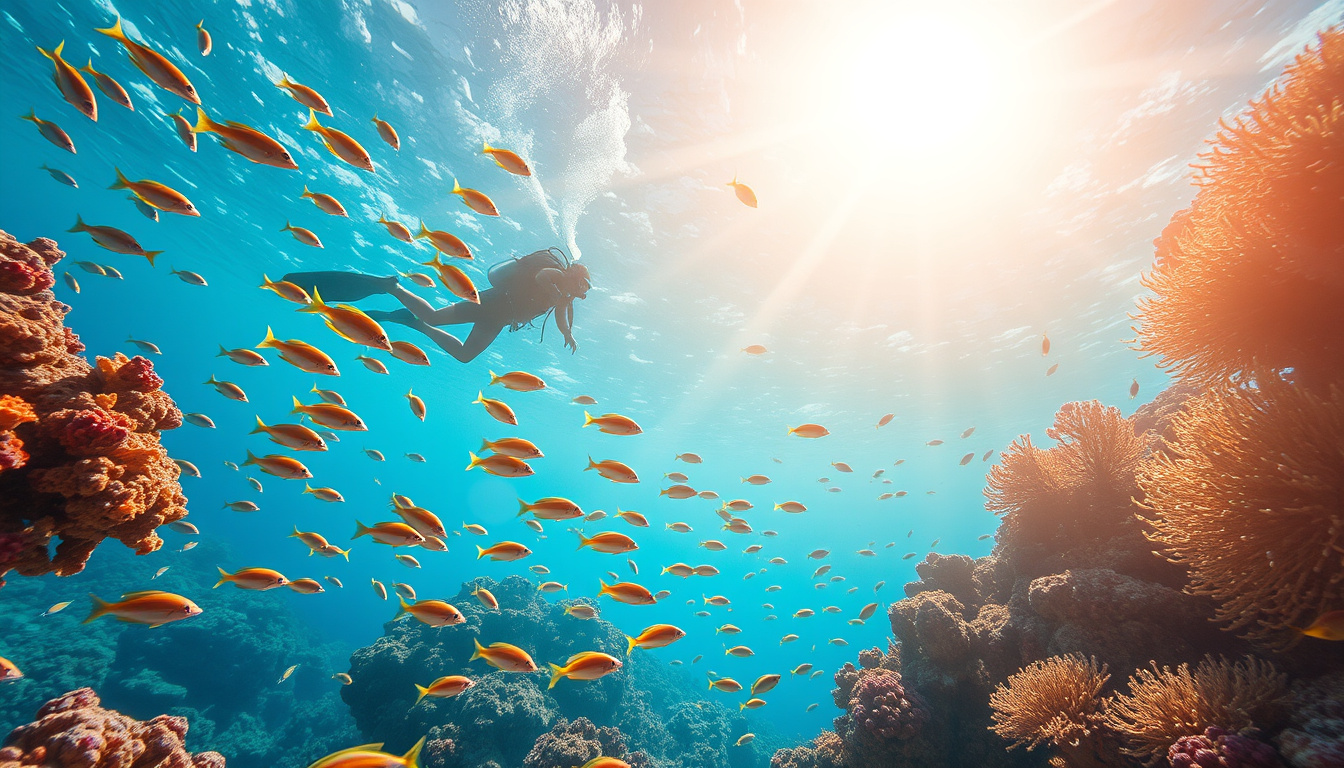Egypt’s Red Sea coastline is a captivating destination renowned worldwide for its extraordinary underwater landscapes and vibrant marine life. For enthusiasts seeking a unique diving experience, the Red Sea offers an unmatched blend of crystal-clear waters, sprawling coral reefs, and a rich diversity of aquatic species. In this article, we dive into what makes the Red Sea a diver’s paradise, based on a firsthand exploration in Sharm El Sheikh, Egypt.
The Allure of the Red Sea for Divers
The Red Sea has built a formidable reputation in the diving community, frequently topping lists of the best dive locations globally. Its appeal lies in several factors:
Exceptional Water Clarity: The visibility in the Red Sea is remarkable. Divers can often see the seabed several meters below the surface, making it ideal for underwater photography and observing coral reefs and marine creatures.
Vibrant Coral Reefs: The coral formations are not only extensive but also intensely colorful. The high salinity of the Red Sea waters contributes to the vividness of the coral and the diversity of marine life, creating a spectacular underwater vista.
Diverse Marine Life: From schools of fish darting among the reefs to occasional sightings of sharks, the Red Sea offers a thriving ecosystem. Its varied dive sites cater to both beginners and experienced divers, ensuring exciting encounters beneath the waves.
Sharm El Sheikh: Gateway to the Red Sea
Our exploration began in Sharm El Sheikh, a well-established hub for diving tourism. Arriving in this city brings immediate access to numerous dive shops and schools, offering equipment rentals, guided tours, and certifications.
Despite a brief visit — limited by the flexibility need posed by the ongoing global travel situation — the highlights of diving in the Red Sea quickly became clear. The water was a stunning shade of blue, warm, and inviting. Visibility allowed easy viewing of fish and coral from the water’s surface before we even descended.
Preparing for the Dive Experience
Diving in the Red Sea, like elsewhere, requires proper preparation. Issues such as minor injuries or ear discomfort can present challenges, but with patience and the right approach, they are manageable.
In one instance during the dive, one diver faced difficulty equalizing ear pressure—a common issue that can require several attempts and patience. Another, contending with a swollen ankle, had to navigate the buoyancy and movement challenges when using fins underwater. Proper gear checks and weight adjustments ensured safe and enjoyable dives despite these physical hurdles.
Underwater Adventures: Encountering the Reef and More
Once submerged, the Red Sea lives up to its expectation. The coral reefs are accessible even in shallower sections, providing a spectacular view of marine biodiversity up close. The ecosystem showcases an array of fish species, coral shapes, and colors—a canvas of life that feels almost otherworldly.
One of the more thrilling moments involved encountering massive underwater structures that extend seemingly endlessly downward into the dark blue depths. While sharks weren’t spotted during this particular dive, the anticipation and the potential to see such creatures add an element of excitement to the dives.
Currents offered an additional dynamic, sweeping divers along the reef at a pace both exhilarating and freeing. The sensation of floating alongside coral formations amid crystal-clear waters is a defining characteristic of Red Sea diving.
Beyond Diving: Snorkeling and Accessibility
For those not certified in scuba diving, the Red Sea remains profoundly inviting for snorkelers. Near-shore reefs provide breathtaking scenes just beneath the surface accessible with minimal training or equipment. The vibrant aquatic life and stunning underwater scenery make snorkeling here an unforgettable experience.
The abundance of dive sites and facilities in Sharm El Sheikh ensures that whether one has days or weeks, the Red Sea can accommodate all levels of underwater exploration.
Frequently Asked Questions About Diving in the Red Sea
Q1: What is the best time of year to dive in the Red Sea?
A1: The Red Sea is generally diveable year-round; however, the best time is usually from March to May and September to November when waters are calm, visibility is excellent, and temperatures are comfortable.
Q2: Is prior diving experience necessary to enjoy the Red Sea?
A2: While experienced divers will enjoy the diverse and challenging sites, many locations cater to beginners through guided shallow dives and snorkeling opportunities.
Q3: Are there any health risks associated with diving in the Red Sea?
A3: Like all diving destinations, proper health checks are recommended. Ear equalization can be tricky for some, as experienced during our dive, so ensuring comfort with pressure adjustments is important.
Q4: Can you see sharks in the Red Sea?
A4: Yes, various species of sharks inhabit the Red Sea, such as reef sharks. However, sightings depend on the dive site and season.
Q5: How salty is the Red Sea compared to other seas?
A5: The Red Sea is highly saline, which enhances water clarity and coral vibrancy but can cause some discomfort if water enters goggles or contacts lenses.
Conclusion: Why the Red Sea Is a Must-Visit for Divers
The Red Sea’s exceptional underwater environment offers an immersive experience that few locations in the world can match. Its clarity, colorful coral reefs, and rich marine biodiversity create an inviting playground for adventurers and nature lovers alike. Diving in Sharm El Sheikh provides easy access to these wonders, supported by excellent facilities and dive schools.
Whether you’re a seasoned scuba diver or a curious snorkeler, exploring the underwater treasures of Egypt’s Red Sea is an adventure that promises unforgettable memories. Flexible travel plans aside, the calling of the sea in this part of the world is irresistible and undoubtedly worth answering.

